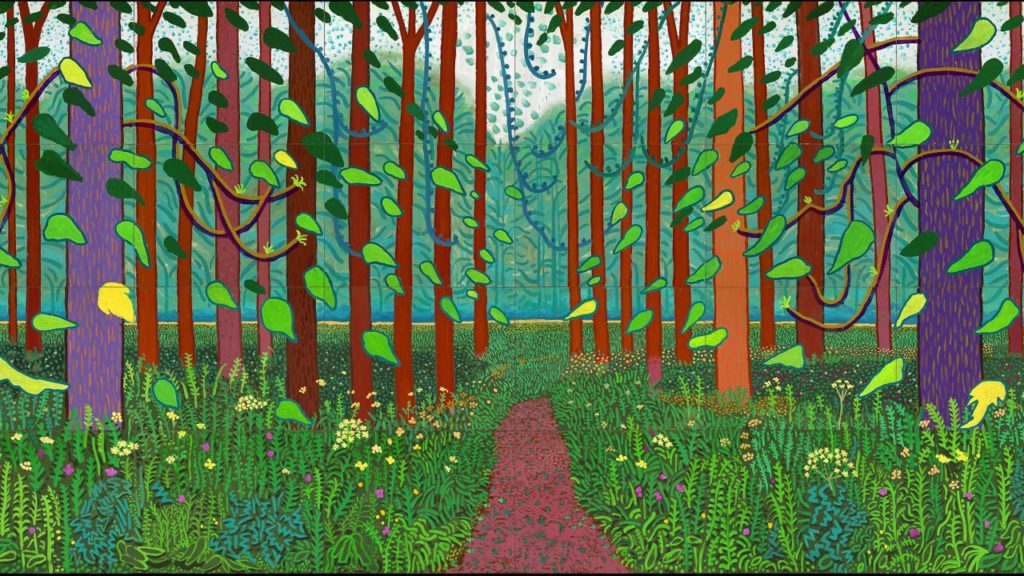Dave and Vince
This is the final weekend of an exhibition of David Hockney at the Van Gogh Museum. Hockney’s swimming pool works? His LA’s beautiful people themes? Nope, it’s all about his extensive investigations into landscape.

We had experienced some of his multi-screen videography of Yorkshire when the deYoung in SF hosted an exhibit. But this was much more extensive and allowed a deeper exploration of how humans see.
Sadly, the Van Gogh Museum doesn’t allow photography (which may be why Andrew asked me to blog today).
The first galleries had side by side comparisons of Dave’s brightly colored, huge depictions of English countrysides along side Vincent’s much more somber much small canvasses of French scenes.
Possibly the biggest take-away for me is Hockney’s view that humans don’t see everything at once while viewing a large work, so he finds it perfectly fine to play with multiple perspectives simultaneously.
Elsewhere in the Van Gogh galleries, Vincent had painted a skull smoking a cigarette. Hopefully the 81 year old chain smoking Hockney got the message.

Speaking of mortality, going through the VVG galleries was enlightening. Proceeding chronologically, we see him develop. Beginning as a frankly uninspired, somber realist before he reaches gay Paree. But then! Then he is exposed to the crucible of artistic explorations: Lautrec, Caillebotte, Bernard, Gaugin, Monet. These guys all *knew* each other. In smoky rooms, in cold studios, they were breaking all the rules, trying out new stuff. Influencing each other and denied admission to the Academy Royal and they said, “F*ck you very much! We will paint our own way!” The Impressionists, The pointillists. The iconoclasts. And Vincent tried these styles. It was great to see him doing impressionist, doing pointillism, even doing Japanese woodblock style paintings.
VVG’s brother Theo was his lifeline. Theo was an art dealer in Paris. VVG wrote to him extensively, influenced Theo on who to support. Theo supported his brother emotionally, and financially as well. VVG began to paint in the style we think of for him: big, vibrant brush strokes. He knew there was money in portraiture but he preferred landscapes. He left Paris, did what many consider his best work in Arles. The vibrancy of those canvasses is captivating. But, as we know, he was suffering mental illness. Ultimately he had himself committed. Some of his best work was painted as he glimpsed through the bar of his asylum. Not. A. Happy. Camper.
He got released. He was struggling. His brother decided to get away from the art dealing. Vincent did not do well with that and the timing was bad. We all know where this led.
He wrote that color was his biggest passion. He considered himself to be a colorist. Ironically, the available new chemical pigments he used have not aged well at all. And the vibrant hues have often gone all murky. There are samples showing where the margins covered by frames show much more color.
Personally I think that would have killed him if he hadn’t killed himself first.